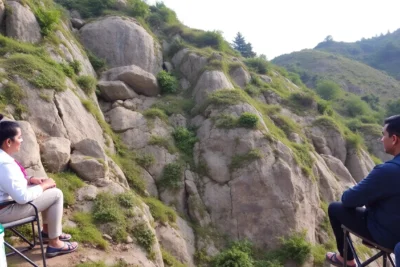
- Exploring El Raval: A Journey Through Barcelona's Hidden Gem
- Cultural Diversity in El Raval: A Vibrant Melting Pot
- Local Cuisine in El Raval: Must-Try Dishes and Where to Find Them
- Art and Street Culture: The Creative Pulse of El Raval
- Hidden Gems: Unique Shops and Markets in El Raval
- The Historical Significance of El Raval: A Neighborhood's Evolution
El Raval, a vibrant neighborhood in the heart of Barcelona, offers a rich tapestry of culture, history, and local life waiting to be uncovered. Known for its eclectic mix of art, gastronomy, and diverse communities, exploring this area reveals hidden gems that often elude the typical tourist path.
In this journey of Exploring Hidden Neighborhoods: Discovering El Raval, we invite you to stroll through its narrow streets, savor authentic cuisine, and immerse yourself in the unique atmosphere that defines this remarkable locale. Each corner holds a story, and every visit promises an authentic experience of Barcelona's dynamic spirit.
As you delve deeper into El Raval, you'll discover a vibrant mosaic of cultures that reflects the neighborhood's rich history. This area, once a haven for sailors and merchants, now thrives with a blend of traditional and contemporary influences. Be sure to visit the iconic La Boqueria Market, a sensory delight where local flavors and artisanal products intertwine to create a culinary experience like no other.
The artistic pulse of El Raval is evident in its many galleries and street art that adorns the walls. A stroll through this neighborhood offers the chance to encounter the works of both established and emerging artists. Noteworthy spots include:
- MACBA (Museum of Contemporary Art)
- Carrer de Joaquín Costa, known for its vibrant murals
- Teatre Grec, a historic venue for performances
El Raval is also home to a diverse array of dining options that cater to every palate. From traditional tapas bars to innovative fusion restaurants, the culinary scene here is a reflection of the neighborhood’s eclectic spirit. Don't miss the opportunity to taste:
- Esqueixada - a refreshing cod salad
- Patatas bravas - crispy potatoes with spicy sauce
- Churros - a sweet treat best enjoyed with chocolate
Finally, as you navigate through the lively streets of El Raval, take a moment to appreciate the unique atmosphere that surrounds you. Engaging with locals and embracing the diverse community will enrich your experience, allowing you to truly understand what makes this neighborhood a hidden gem in Barcelona. From hidden cafés to charming plazas, every visit reveals something new and exciting.
Cultural Diversity in El Raval: A Vibrant Melting Pot
El Raval is renowned for its cultural diversity, serving as a vibrant melting pot where various communities converge. This neighborhood is home to a rich tapestry of nationalities, which is reflected in its culinary offerings, festivals, and daily interactions among residents. You'll find everything from traditional Catalan dishes to international cuisines, showcasing the influence of its multicultural populace.
One of the most exciting aspects of El Raval is its annual cultural festivals that celebrate this diversity. Events such as the Raval Cultural Festival highlight the neighborhood’s art, music, and food, fostering a sense of unity among the diverse groups living here. Attendees can enjoy performances from local artists, food stalls offering global cuisine, and workshops that invite participation from all ages.
Furthermore, El Raval's streets are lined with shops and businesses that reflect its multicultural essence. Visitors can discover:
- Middle Eastern bakeries offering traditional sweets
- Asian markets selling exotic ingredients
- Latin American restaurants serving authentic dishes
This cultural richness not only enhances the neighborhood's appeal but also fosters an environment of tolerance and collaboration. Engaging with the locals and participating in community events will provide a deeper understanding of the social fabric that makes El Raval a truly unique and welcoming neighborhood in Barcelona.
Local Cuisine in El Raval: Must-Try Dishes and Where to Find Them
When exploring the culinary landscape of El Raval, one cannot miss the iconic patatas bravas, a beloved Spanish dish featuring crispy potatoes served with a tangy sauce. For an authentic experience, head to Bar Tomás, known for serving some of the best bravas in the city. Another must-try is esqueixada, a delicious cod salad that perfectly embodies the local flavors; you can find an excellent version at Casa de Tapes Cañota.
The sweet tooth is also satisfied in El Raval, particularly with the traditional churros that are best dipped in rich hot chocolate. Churrería Xurreria is a local favorite where you'll find these delightful treats, making it a perfect stop for a midday snack. Additionally, don’t overlook the chance to try bacalao a la vizcaína, a Basque-inspired cod dish available at Restaurant Cañete, renowned for its dedication to authentic Spanish cuisine.
For those who prefer a variety of options, El Raval's vibrant market scene is unmatched. The La Boqueria Market offers an array of local delicacies, from fresh seafood to artisanal cheeses. Visitors can enjoy sampling products like fuet (cured sausage) and various local cheeses, making this market a culinary hub. Make sure to visit during lunchtime for a taste of the fresh tapas available from various vendors.
To help you navigate El Raval’s culinary offerings, here’s a quick guide to some essential dishes and where to find them:
| Dish | Description | Where to Find It |
|---|---|---|
| Patatas Bravas | Crispy potatoes with spicy sauce | Bar Tomás |
| Esqueixada | Refreshing cod salad | Casa de Tapes Cañota |
| Churros | Fried dough pastries with chocolate | Churrería Xurreria |
| Bacalao a la Vizcaína | Basque-inspired cod dish | Restaurant Cañete |
Art and Street Culture: The Creative Pulse of El Raval
El Raval is not just a neighborhood; it’s a living canvas that pulsates with art and street culture. As you wander through its winding alleys, you’ll be greeted by colorful murals and graffiti that tell stories of the community. These works, often created by local artists, reflect the struggles, joys, and vibrancy of life in El Raval. This artistic expression transforms the streets into an open-air gallery, inviting everyone to participate in the conversation.
The neighborhood is also home to numerous galleries and cultural spaces that foster creativity and innovation. Notable highlights include:
- La Virreina Centre de la Imatge - showcasing contemporary photography and visual arts
- Galeria Joan Prats - featuring works from both seasoned and up-and-coming artists
- Fundació Antoni Tàpies - dedicated to the legacy of the influential Catalan artist
Street culture in El Raval goes beyond visual art; it encompasses dance, music, and performance. The neighborhood frequently hosts open-air events where local musicians and dancers showcase their talents, creating an atmosphere of celebration and unity. Visitors can experience everything from spontaneous flamenco performances to hip-hop battles, reflecting the diverse influences that shape this vibrant community.
Participating in these cultural happenings allows you to engage more deeply with the spirit of El Raval. Schools and community centers often offer workshops and classes, inviting both locals and tourists to learn about various art forms. Embracing the dynamic street culture not only enriches your visit but also strengthens the connections within this eclectic neighborhood.
El Raval is a treasure trove of unique shops and markets that reflect its vibrant character. Among the hidden gems, you'll find Llibreria Calders, a charming bookstore that doubles as a cultural center, hosting readings and art exhibitions. The shop not only offers a vast selection of literature but also serves as a hub for local artists, making it a perfect spot for those looking to dive into the literary scene of the neighborhood.
The shopping experience in El Raval is further enhanced by the presence of various eclectic boutiques. For instance, Vinçon is a design store known for its quirky gifts and local crafts, showcasing the creativity of Barcelona's artisans. Additionally, the bustling Raval Market offers an array of fresh produce, artisan goods, and traditional delicacies that embody the neighborhood's culinary diversity.
Strolling through the narrow streets, don’t miss the chance to explore Antoni Pinyol, a vintage shop filled with unique clothing and accessories that capture the essence of bygone eras. This shop is a favorite among fashion enthusiasts looking to discover one-of-a-kind pieces that tell a story. Moreover, El Raval's markets often feature local vendors who provide an authentic shopping experience, where you can find everything from handmade crafts to organic food.
Lastly, if you’re searching for memorable souvenirs, head to El Celler de Can Roca, which specializes in local wines and spirits. Here, you can taste and purchase exquisite bottles that celebrate Catalonia's rich viticulture. The combination of unique shops and vibrant markets makes El Raval a haven for those eager to discover the hidden gems of Barcelona.
The Historical Significance of El Raval: A Neighborhood's Evolution
The historical significance of El Raval is rooted in its transformation from a marginal area to a bustling neighborhood that encapsulates the essence of Barcelona. Initially developed as a space for trade and commerce, it attracted a diverse population, making it a melting pot of cultures. Over the years, this evolution has led to a vibrant community that reflects the city’s dynamic social fabric.
Throughout its history, El Raval has experienced various phases of change, influenced by political, economic, and social factors. Some key milestones include:
- The establishment of the Montserrat Monastery in the 12th century, which marked the beginning of urban development.
- The industrial boom in the 19th century, resulting in an influx of workers and the construction of dense housing.
- The urban renewal projects of the late 20th century, aimed at revitalizing the neighborhood and enhancing public spaces.
Today, El Raval stands as a testament to resilience and adaptation, inviting visitors to explore its rich history through architecture and landmarks. Significant sites include the Hospital de la Santa Creu, a Gothic building that tells tales of medieval healthcare, and the Palau Güell, an architectural gem designed by Antoni Gaudí that showcases the neighborhood's artistic evolution.
As you wander through El Raval, the layers of its past are visible in the vibrant street life and cultural expressions that define the area. Engaging with the local community reveals stories of heritage and transformation, making El Raval a living archive of Barcelona’s rich history. This neighborhood not only enriches our understanding of the city but also invites ongoing exploration and appreciation of its cultural heritage.
A continuación, te presentamos un video que te llevará a explorar los barrios ocultos de El Raval y descubrir su rica cultura y vibrante vida local.

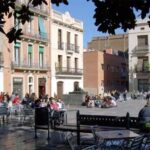 Exploring Gràcia: A Quaint Village within the Bustling City of Barcelona
Exploring Gràcia: A Quaint Village within the Bustling City of Barcelona Ultimate Barcelona Taxis Safety Guide: Stay Secure and Explore the City Hassle-Free
Ultimate Barcelona Taxis Safety Guide: Stay Secure and Explore the City Hassle-Free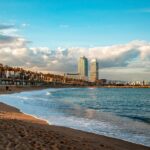 Discovering the Best Barcelona Beach: Your Ultimate Guide
Discovering the Best Barcelona Beach: Your Ultimate Guide The Best Restaurants near Sagrada Familia in Barcelona
The Best Restaurants near Sagrada Familia in Barcelona Explore La Rambla: Shops & Street Performers
Explore La Rambla: Shops & Street Performers Barcelona Tourism: The Ultimate Guide to Scooter Rental in Catalonia
Barcelona Tourism: The Ultimate Guide to Scooter Rental in CataloniaIf you want to know other articles similar to Exploring Hidden Neighborhoods: Discovering El Raval you can visit the category Blog.
Deja una respuesta

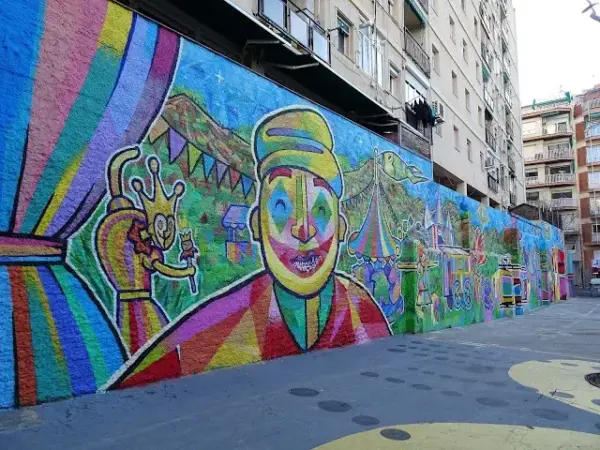
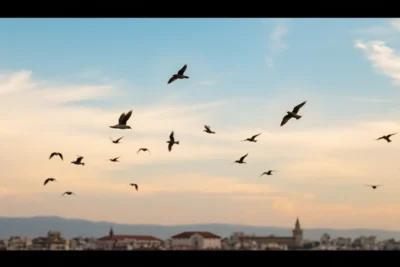



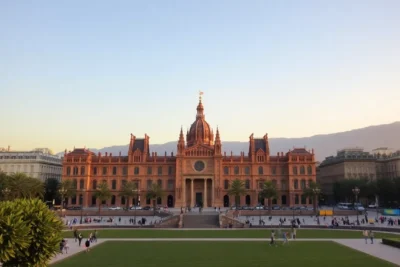

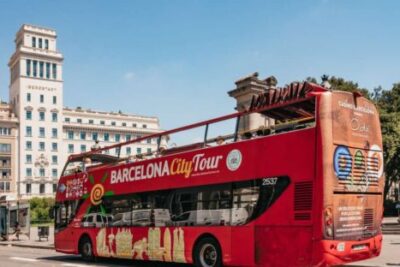
Read more!